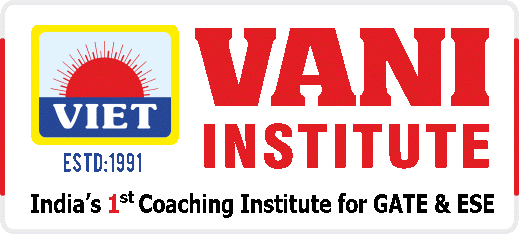The Rise of Chemical Engineering: Global Trends and the Indian Industry Landscape
Chemical engineering has witnessed significant growth over the years, driven by advancements in technology, increasing industrialization and the global push for sustainability. Originally focused on large-scale chemical production, the field expanded into diverse areas like biotechnology, nanotechnology, environmental engineering, and materials science, etc. With the rising demand for clean energy, efficient manufacturing processes, and eco-friendly products, chemical engineers are playing a crucial role in solving real-world challenges. The integration of digital tools like process simulation, data analytics and automation has further enhanced the scope and efficiency of chemical engineering, making it a dynamic and evolving discipline with vast career opportunities.
Historically, looking back, the evolution of chemical engineering traces back to the Industrial Revolution, where the need for large-scale chemical production led to the transformation of chemistry from a laboratory science into industrial processes. Initially, chemistry and engineering were distinct disciplines, with chemists running processes without formal engineering principles. The early 20th century marked the formalization of chemical engineering with the introduction of the unit operations concept by pioneers like Arthur D. Little and William H. Walker, and the establishment of the first chemical engineering curriculum at MIT in 1888. By the mid-20th century, the field expanded through process engineering, scale-up methods, catalysis, and process control, enabling efficient industrial production. In the late 20th century, digital tools revolutionized plant design and operation, while growing environmental concerns redirected focus toward sustainable and safe processes. Looking ahead, the 21st century emphasizes green engineering, renewable resources, digital transformation through AI and machine learning, and the development of advanced materials at the molecular level, positioning chemical engineering at the forefront of innovation for global challenges.
Recent developments in chemical engineering reflect a dynamic shift toward sustainability, digital innovation and advanced materials. Efforts like Louisiana State University’s electromagnetic plastic recycling and Reju’s chemical recycling of polyester aim to tackle global plastic waste while reducing fossil fuel dependency. However, challenges persist, as critics highlight the energy intensity and limited scalability of “advanced recycling” technologies. In process innovation, generative AI and deep reinforcement learning are transforming design tasks and flowsheet optimization, streamlining complex decision-making in chemical processes. Environmental concerns remain central, with initiatives addressing harmful “forever chemicals” and regulations pushing for safer practices. However, potential economic impacts from strict green policies cannot be ruled out. On the energy frontier, breakthroughs, such as, sodium-air fuel cells for aviation and metal-organic frameworks (MOFs) for carbon capture show promise in lowering emissions. Meanwhile, phase-change materials enhance energy storage efficiency. Advances in nanotechnology, including 2D materials and nanocatalysts, are enabling more selective and sustainable chemical transformations. Modular and intensified processes, like microreactors and distributed plants, support flexible and localized production. Climate change mitigation technologies, such as, direct air capture and green hydrogen production are progressing, alongside innovations in bioprocessing, e-waste recycling, and carbon utilization. The digital transformation continues with tools like digital twins, blockchain, and big data analytics optimizing plant safety, efficiency, and transparency. Altogether, these innovations are reshaping chemical engineering into a discipline central to addressing 21st-century environmental, technological, and societal challenges.
India's chemical engineering industry is one of the fastest-growing sectors, contributing significantly to the country’s GDP and industrial output. It ranks as the 6th largest producer of chemicals globally and the 3rd largest in Asia, with over 80,000 commercial products covering bulk chemicals, specialty chemicals, agrochemicals, and petrochemicals. The sector is deeply intertwined with key industries like pharmaceuticals, textiles, automotive, and food processing, making chemical engineers crucial to India's industrial ecosystem.
In recent years, Make in India, PLI schemes, and FDI liberalization have spurred domestic and foreign investment in chemical manufacturing and R&D. India is also emerging as a global hub for specialty chemicals due to cost advantages, a strong talent pool, and increasing export demand. Indian chemical engineers are playing leading roles in areas like process intensification, waste minimization, and green chemistry, driven by environmental regulations and sustainability goals.
However, the industry also faces challenges such as infrastructure gaps, regulatory complexity, and environmental compliance. To address these, there's a growing push toward automation, digitalization (e.g., using AI, IoT, and digital twins), and circular economy practices. Institutions like IITs, NITs, ICT Mumbai along with other world class universities and institutions are producing quality chemical engineers who are contributing to both academia and industry innovations.
Overall, India’s chemical engineering industry is positioned at a critical juncture — balancing rapid growth with sustainability, innovation, and global competitiveness.
The future of the Indian chemical industry is poised for robust and transformative growth, driven by rising domestic demand, export potential, and increasing focus on sustainability and innovation. As the global supply chain diversifies away from China, India is emerging as a preferred manufacturing hub for specialty chemicals, agrochemicals, and pharmaceuticals. The industry is expected to grow at a CAGR of 9–10%, potentially reaching USD 300 billion by 2025–2030.
Government initiatives such as “Make in India,” Production Linked Incentive (PLI) schemes, and 100% FDI allowance are encouraging capacity expansion and R&D investments. Green chemistry, digital transformation, and circular economy principles will shape the industry's future, with emphasis on reducing carbon footprints, developing biodegradable materials, and enhancing process efficiency using AI, IoT, and automation.
The sector also presents strong export opportunities, particularly in specialty chemicals and intermediates, as global players seek reliable, cost-effective suppliers. Furthermore, the rise of electric mobility, renewable energy, and sustainable agriculture will create demand for new materials and technologies, opening up fresh avenues for chemical engineers.
However, the future will also demand navigating challenges, such as, environmental regulations, infrastructure development, and skilled workforce availability. To stay competitive, Indian firms must invest in R&D, safety compliance, and global certifications while collaborating with academia and startups to drive innovation. Aarti Industries Ltd Mumbai, a company from private sector, demonstrates how Indian chemical companies can scale globally by focusing on process innovation, environmental responsibility, and value-added manufacturing, all of which are deeply rooted in advanced chemical engineering practices. Likewise, IOCL, a public sector company, exemplifies how a traditional energy giant can leverage chemical engineering excellence to diversify into petrochemicals, lead in clean energy, and foster home-grown innovation while ensuring energy security and environmental responsibility for India.
Further, Micro, Small, and Medium Enterprises (MSMEs) are vital to India’s chemical industry, with over 30,000 units contributing to specialty chemicals, dyes, and agrochemicals. They drive local manufacturing, job creation, and export-led growth through frugal engineering and import substitution.
Government initiatives like Credit Linked Capital Subsidy Scheme, Trade Related Entrepreneurship Assistance and Development, and MSME Technology Centres support modernization and credit access. At the same time, startups are emerging as innovation drivers in green chemistry, clean fuels, and waste valorization, enabled by AI, biotech, and materials science. Platforms, such as, Startup India, Atal Innovation Mission, and incubators like NCL Innovation Park and IIT Delhi’s FITT, along with backing from CSIR, DST, and industry leaders like Reliance and TATA Chemicals, are nurturing this ecosystem. Startups like Tan90, String Bio, and Greenjoules exemplify this transformation. Together, MSMEs and startups are shaping a sustainable, resilient, and globally competitive chemical sector for India.
In summary, with the right policy support, innovation ecosystem, and sustainable practices, India is well-positioned to become a global leader in chemical manufacturing and engineering solutions in the coming decades.


Professor Ajay Bansal
President-2025
Indian Institute of Chemical Engineers, Kolkata India












